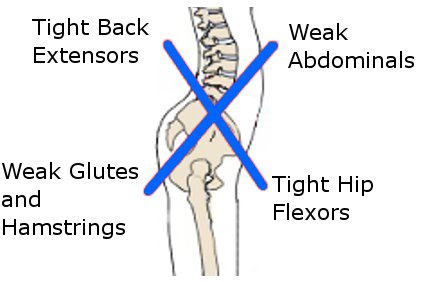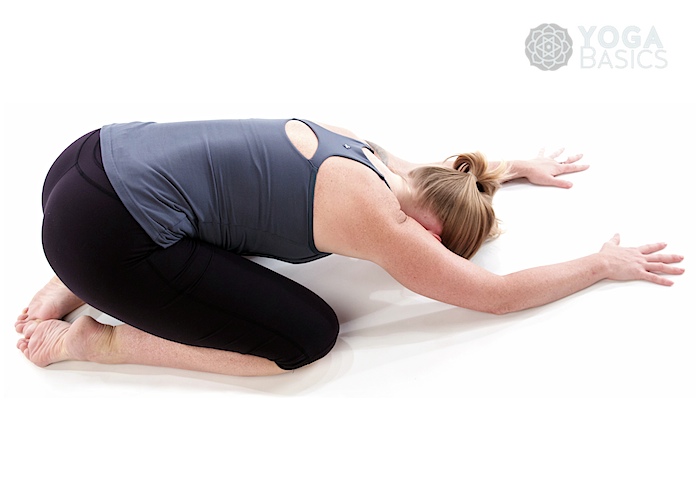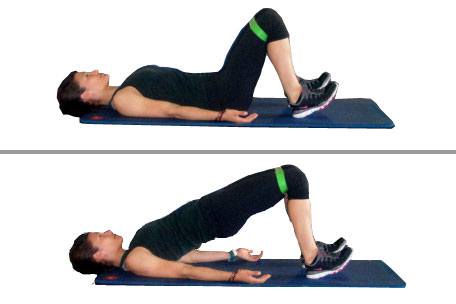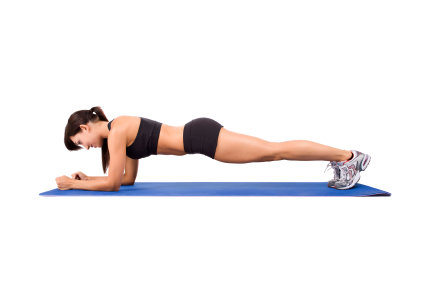A late response here.
It depends on what's causing it. Whether your problem is functional (tight and loose muscles, motor control issues) or structural (anatomy), and what's giving you the biggest issues. There are some standard things that are applicable to the overwhelming majority of cases of anterior pelvic tilting.
Usually the problem is tied in with lower cross syndrome. Meaning; elongated and/or overactive hamstrings, weak glutes, weak abs (particularly the ones that attach at the pelvis, but really also the stabilizers), increased lordosis/lower back arch (can be a tight lower back muscles, but could just be a posture pattern) and tight/shortened hip flexors which sometimes crossed over into tight quads. That's usually the basics. Whether the biggest factor is tightness, weakness or a stability problem is hard to say and most of the time it's a combination. Without assessing you individually, there are some good exercises out there.
Leg curl is a good exercise and you should keep doing it, but it wont address your anterior tilt. Training the "upper" abs wont necessarily do much either. Squats can help, but it depends on cueing. There are many exercises you can do, but I would do these:
Dynamic stability:
Just play around with your pelvic position a little like in the vid here. Feel it out. Play around with finding a good neutral position as well, perhaps look in a mirror:
Maybe a few cat/cow reps:
And end with childs pose for a few deep breaths:
Stretching:
Your hip flexors. This video perfectly illustrates the right way to do it:
When you get better at controlling your pelvis and keeping your tailbone tucked in and squeezing your glutes, then you could try this variation down the road. Keep in mind the same cues:
Piriformes stretch against wall:
Activation/Strenghtening:
You can use the clam and reverse clam for glut med activation:
Keep the knees bend and hips at a 45 degree angle as shown. Stabilise your hips and pelvis and don't let it move when you do the exercises.
Glute Bridges:
You can also use a band around your knees while doing it, or squeezing a ball between your knees while doing it to active the adductors and muscles of the pelvic floor.
When that is too easy, you can do some single leg ones:
The whole point is trying to think about using the glutes. Try lifting the ball of your feet off the ground and point your toes at yourself like in the picture and video. When doing the single leg variation, try bending the leg that's in the air, point your toes at yourself there as well and keep it close to your chest. That will give more room for a posterior tilt and better glute squeeze.
Front plank:
Keep it nice and straight.
Tuck the tailbone under you/create a slight posterior tilt while squeezing the glutes when holding it. This is important for addressing your anterior tilt.
When it gets too easy, you can move on to this progression:
Lower ab work:
Just focus on the bend leg variations she's showing and use the cues. Keep your lower back pressed into the ground during the exercises.
This bend leg progression can also be used when you get more comfortable with the movement, but that's further down the road. It's challenging to do correctly:
Obviously this is prehab/rehab stuff. So, I would probably do something like this before your regular workout:
Standing dynamic drill for a few reps.
Cat/cow for a few reps and then Childs Pose for a few breaths.
Lunge stretch untill a release and relaxation is felt one time on each leg.
Clam for 12-20 reps, reverse clam for 12-20 reps, repeat on the other side.
Glute bridge or single leg progression for 12-20 reps, feel that glute squeeze.
Front plank with glute squeeze for X seconds, improve over time.
Both variations of the bend leg ab exercises for some reps untill you find it hard to keep lower back pressed against the floor.
- for 1-2 sets.
It doesn't have to take longer than 15 minutes. Just do it consistently.
Keep doing your squats, deadlifts, romanian deadlifts or what you're doing and you could end your workout with the piriformes stretch against a wall if you want. It feels good. Practice hip hinging properly, maybe upload a video of your squat and deadlift technique for form correction.
Let me know if it helps in a few weeks.







